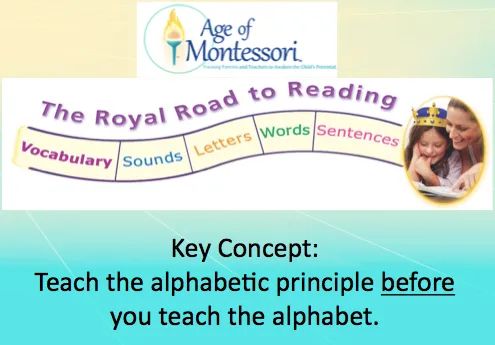Learning Sounds – A building block for literacy
 Have you ever stopped to think about how a child learns that our written language is connected to our spoken language? If an alien landed on our planet and saw a bunch of symbols on a page, he might never realize that those symbols have a relationship with the sounds coming out of people’s mouths. So of course it makes sense that when we are teaching a child about language (and eventually how to read), we must start by teaching that those symbols on the page represent sounds.
Have you ever stopped to think about how a child learns that our written language is connected to our spoken language? If an alien landed on our planet and saw a bunch of symbols on a page, he might never realize that those symbols have a relationship with the sounds coming out of people’s mouths. So of course it makes sense that when we are teaching a child about language (and eventually how to read), we must start by teaching that those symbols on the page represent sounds.


The key is to understand that the symbol “s” means something. It represents a sound (a phoneme) in our language (like the “s” in sun). That is why we teach the alphabetic principle before you teach the alphabet. It’s equivalent to the way you teach math. You put the concrete item (s) in their hands (4 rocks) before you ever show them the number 4. You want them to experience the principle, and then learn the symbols. In math, you first give 4 rocks and then teach the symbol “4”. Similarly, in language, you show a picture of a ball next to the letter “b” and focus on the fact that “b” is the symbol for the “Bbbbb” sound the child makes when he identifies the bear in the picture. We don’t want to confuse him by teaching him the names for letters, which are typically sung in the “A-B-C” song.
 I just began watching the “Royal Road to Reading” DVD’s and I’m so excited about what I am learning in terms of how to help my child to have the building blocks he needs for reading! The national Institute of Child Health and Development’s reading panel says there are 3 non-negotiables for early reading. The first is phonemic awareness (being able to recognize and manipulate the sound parts of words. A “phoneme” is the smallest unit of speech sound). And Age of Montessori Founder Mary Ellen Maunz shares that, “The ability to take a word and identify its sound parts has been identified as the single most reliable predictor of a child’s ability to learn to read!”
I just began watching the “Royal Road to Reading” DVD’s and I’m so excited about what I am learning in terms of how to help my child to have the building blocks he needs for reading! The national Institute of Child Health and Development’s reading panel says there are 3 non-negotiables for early reading. The first is phonemic awareness (being able to recognize and manipulate the sound parts of words. A “phoneme” is the smallest unit of speech sound). And Age of Montessori Founder Mary Ellen Maunz shares that, “The ability to take a word and identify its sound parts has been identified as the single most reliable predictor of a child’s ability to learn to read!”

The second non-negotiable is the alphabetic Principle (recognizing the relationship between sounds and letters). Non-negotialble #3 is to take those skills and apply them to reading. As Age of Montessori master teacher has said, “It’s not about memorizing the alphabet, it’s about deeply understanding it.
Learn more with our Royal Road to Reading. Also, watch our free webinar on early literacy building blocks. Also, find some great ideas for reading to your child this summer!






















